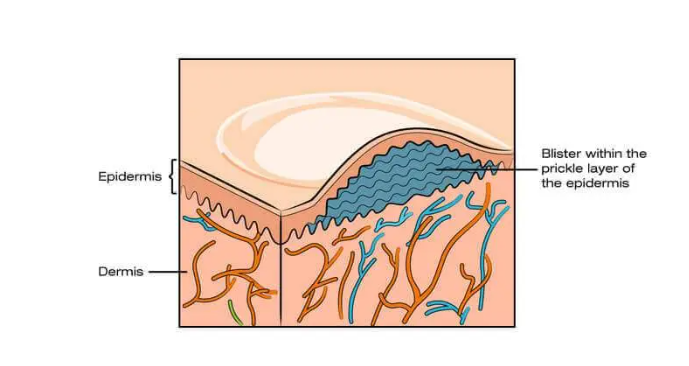With enough friction on the toes or the soles of the feet during any intense exercise, the feet can easily become blistered, and in some cases, a simple blister can also form a blood blister. In this article, we can learn what blood blisters look like, what causes them, and what we can and should do if they develop blood blisters.
Blood blisters are essentially a very common type of blisters, blood blisters are basically the same as regular blisters, but they can also damage the blood vessels under the skin if the blood vessels below the blisters are damaged. This causes blood to leak inside, usually turning the blisters dark red or purple. This bloody blister triggers the body to send a signal to trigger an immune system response, causing inflammation in the area. All of these factors combine to cause the blood blisters on the toes to become inflamed, causing pain, tingling, and itching.
Blood blister It usually occurs on the tips of the toes, especially the little finger, but can also occur on the ball of the thumb or the ball of the foot. The location of the blood blister tends to vary based on the structure of the foot, and the location of the blister can tell you how to land in sports like running and soccer.
For example, people with high arches are more likely to develop blood blisters on the soles of their feet than people with flat feet. If the toe is bent upwards, called a floating toe, blood blisters are likely to form on the tip of the toe as the toe rubs against the shoe during exercise.
So what do you do?
To help you properly care for your blood blister, we'll cover a few dos and don'ts for treating this minor injury and answer some other frequently asked questions.
What causes the formation of blood vesicles?
Blood blisters often appear from walking, hiking, running or dancing on any area of the foot that experiences excessive pressure and friction. You're more likely to develop blood blisters if you've been exercising for a long time and the bony parts of your feet are constantly rubbing against the inside of your shoes.
It's also likely that your feet are trapped in ill-fitting socks and shoes.
Blood blisters can also form when the skin is severely squeezed. Such intense pressure can easily damage blood vessels and form blood vesicles.
How do prevent blisters and blood blisters?

To prevent blood blisters, the cause must first be identified.
①Reconsider your foot shape first. Everyone's feet are different; the height of the arch, the length of the toes, and the wrong shoes can cause serious wear and tear on the feet.
② Prepare a Longterm Medical blister plaster, which can help you prevent your feet from being ground into blisters. If there are already blisters or blood blisters, you can also puncture them and stick them on. The blister plaster is made of an ultra-thin hydrocolloid material. It can prevent the invasion of foreign microorganisms, absorb a small amount of exudate, and can also help wounds heal quickly. It is invisible and beautiful. It is very suitable for people who often love sports and wear high-heeled shoes. Ladies, because of its strong stickiness, it is not easy to fall off even when you do intense exercise, and its surface is also waterproof.
You don't want to puncture the blood blister?
Just like regular blisters, blood blisters still protect the delicate skin underneath. Breaking the skin can increase the risk of infection or scarring.
Try to allow the blister to dry and flatten on its own. It is recommended that blisters larger than five millimeters still be poked around the blisters to drain the fluid, and you must also make sure to use the correct tools and procedures to keep the wound clean.
Paste the blister plaster to help the wound heal faster and prevent wound infection better.
No matter what you do, the skin over the blister can still crack or become loose as it heals. Do not remove any of this skin even if the blisters have burst. It still provides a protective layer on the underlying skin, and removing it can further open the wound to infection. Keep it in place if you can.
When do I need to see a doctor?
In most cases, you don't have to see a doctor. Just stick the blister plaster; it is a sterile environment. All you need to do is remove the blisters, so they don't get bigger or burst. However, if your blood blisters burst and become large or painful or red, it may be infected ( check for these signs of infection ). If it gets worse rather than better, talk to your doctor for medical advice specific to your situation.
You don't have to be too nervous because of this. By doing the above prevention methods in advance, you can prevent the formation of blisters to the greatest extent.
For more information on Innomed® dressings, refer to the previous articles. If you have customized needs, you are welcome to contact us; we will serve you wholeheartedly.
At Longterm Medical, we transform this data by innovating and developing products that make life easier for those who need loving care.
Editor: kiki Jia
Date: August 8, 2022

 English
English عربى
عربى Español
Español русский
русский 中文简体
中文简体








